Accessing any real estate company’s performance based on ESG becomes crucial as the real estate sector is the 2nd largest employer in India, accounting for 39% of carbon emissions. The government’s constant push to achieve net zero emissions by 2070 is likely to play a pivotal role in shaping the real estate market in India.
As per Vestian Research, over 65% of Grade A office space across India's top 7 cities is green-certified. Moreover, among 1,362 Grade A buildings, 805 (or 59%) boast of green certifications, highlighting India's growing commitment to sustainable construction.
As India's office market attracts global occupiers, developers are increasingly prioritizing international certifications. This trend is reflected in the dominance of LEED certification, which accounts for a remarkable 74% share as of Q2 2024. Moreover, Gold is the most prominent certification in the Indian office market as 49% of buildings are certified gold under LEED and 51% are accredited gold under IGBC.
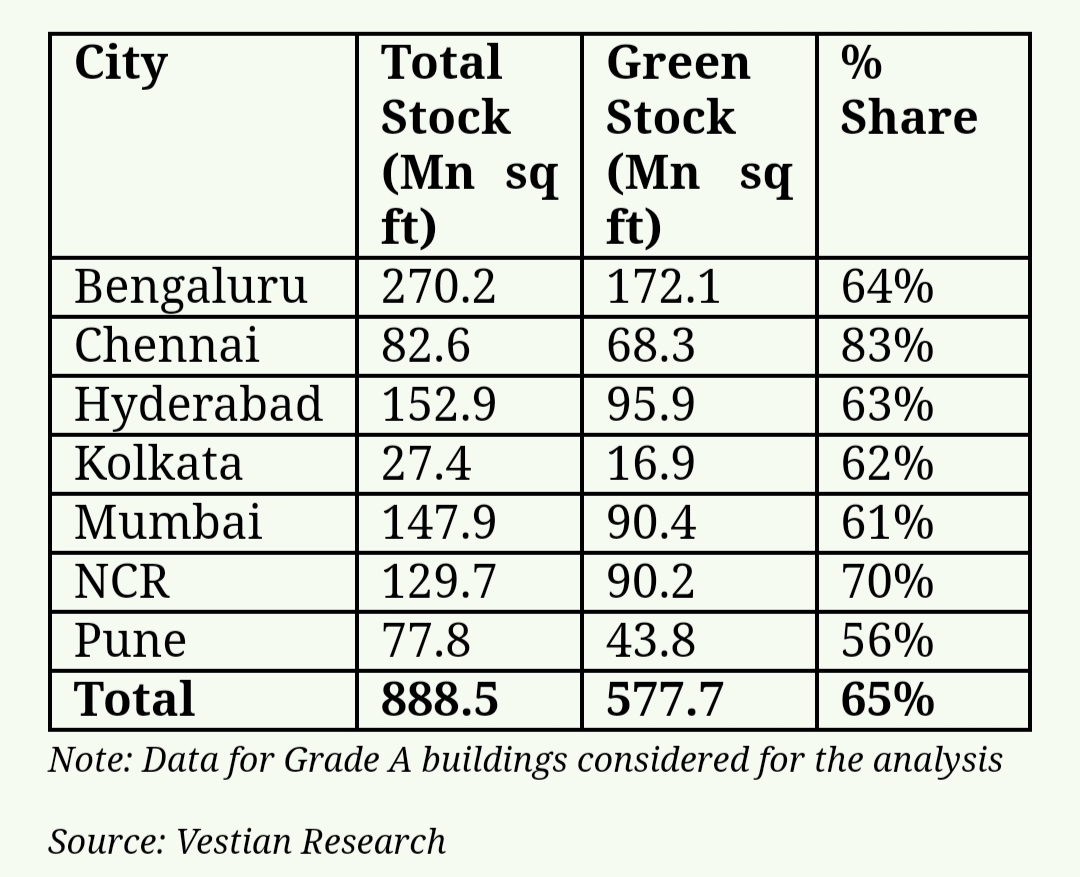
City-wise Analysis
Southern cities (Bengaluru, Chennai, and Hyderabad) account for 58% of the total green stock pan-India. Bengaluru accounts for the highest, 172 Mn sq ft, green stock amongst the top seven cities of India. Chennai accounts for the highest percentage share, 83%, of green stock out of the city’s total Grade A stock.
Despite having the lowest stock for Grade A office buildings in pan-India, 62% of the area is green-certified in Kolkata. On the other hand, Pune has the lowest percentage, 56%, of green-certified office buildings despite the prominence of MNCs in city leasing.
Built-up Area-wise Analysis
Grade A office buildings with a built-up area of less than 5 lakh sq ft account for 47% of the total number of green-certified buildings. On the other hand, office buildings with a built-up area of more than 10 lakh sq ft account for only 19% of the total number of green-certified buildings. Despite this, 90% of the total projects within this category still qualify as green buildings, showcasing a strong focus on sustainability. Notably, green certification is rare in office buildings with a built-up area of less than 1 lakh sq ft. This signifies lower preference for sustainability practices amongst small and medium-scale developers and occupiers.
Green-certified Projects Command Premium in Rental Values
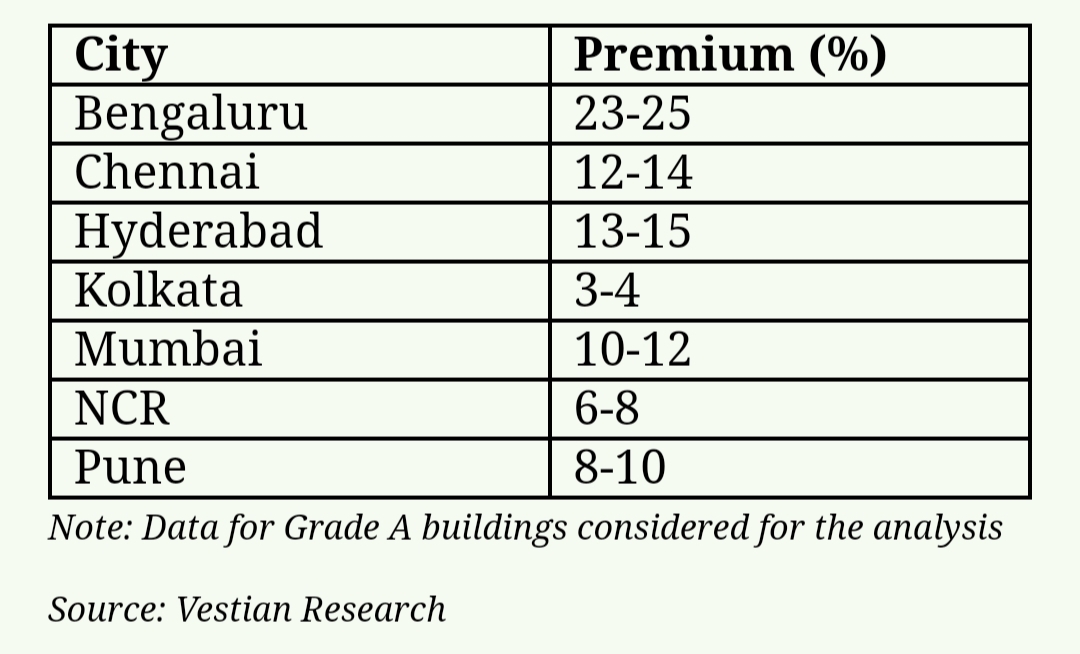
Green-certified buildings command a 12% to 14% premium on average over non-green buildings. This demonstrates that developers are rewarded for initial investment in costly sustainable development, as they can charge a premium from occupiers.
Bengaluru leads the pack with a premium of 23-25% with Chennai and Hyderabad following behind at 12-14% and 13-15%, respectively. This suggests a strong focus on sustainability in these tech hubs, where companies are willing to paya premium to promote environmental responsibility and enhance employee well-being. Developers in Mumbai and Pune charge 8-12% premium in rentals for green-certified buildings compared to non-certified areas.
Conclusion
The Vestian report highlights that over 65% of Grade A office spaces in India’s top seven cities are now green-certified, marking a significant advancement in the country’s commitment to sustainable construction. Southern cities lead in green certification, with Bengaluru and Chennai standing out in both total green office space and certification percentage. The analysis also reveals that green-certified buildings command a rental premium of 12-14%, underscoring the growing market recognition of sustainability. This trend not only aligns with India’s goal of achieving net zero emissions by 2070 but also demonstrates that environmental responsibility is increasingly valued by occupiers and developers alike.
Image source- Pinterest


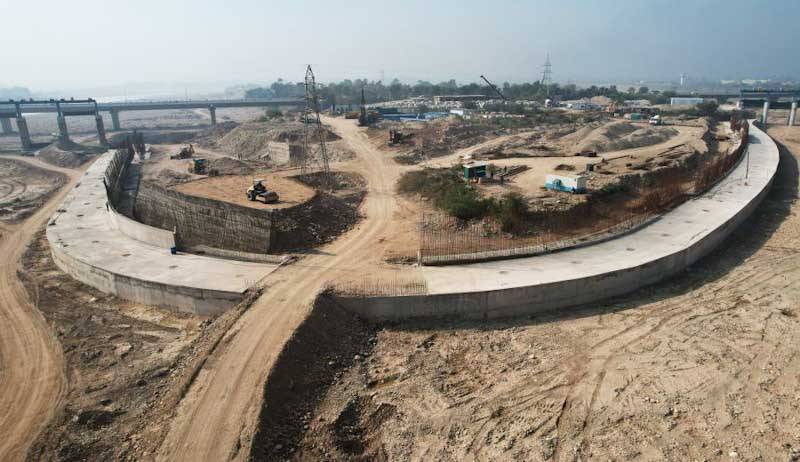

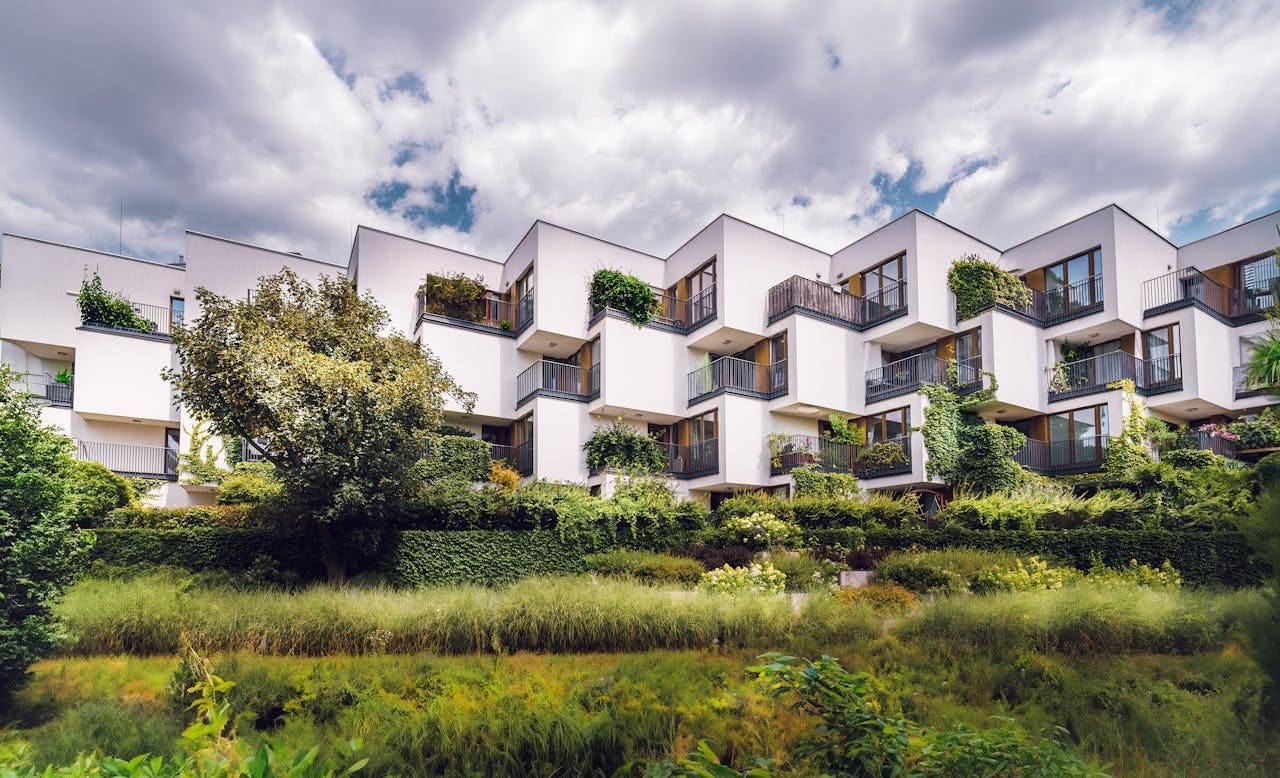
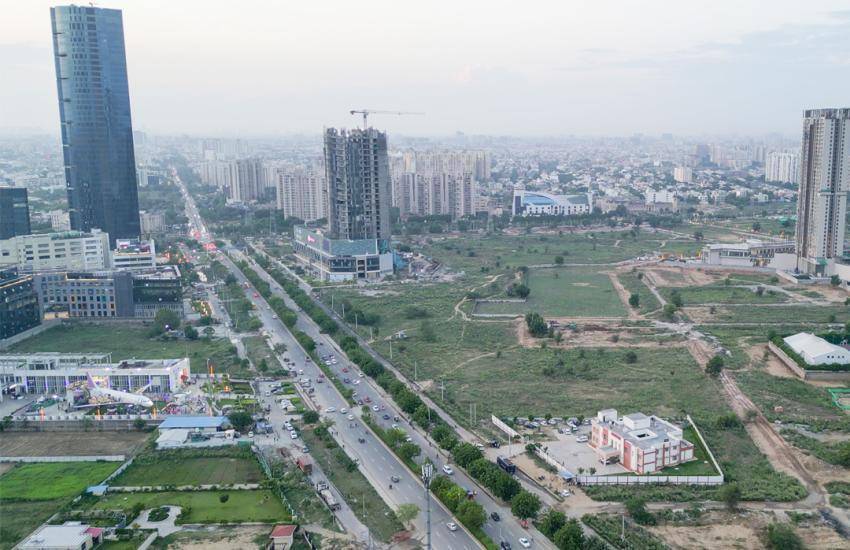

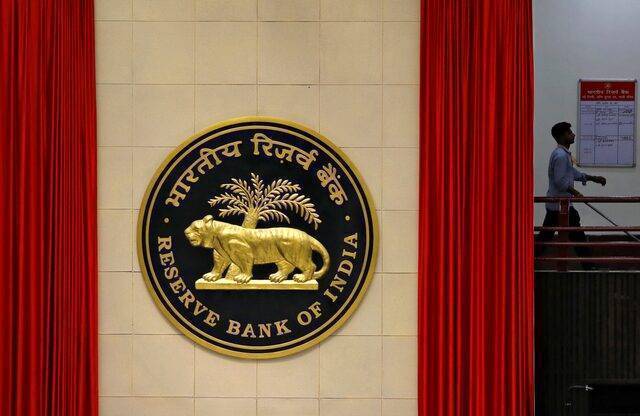

.png)